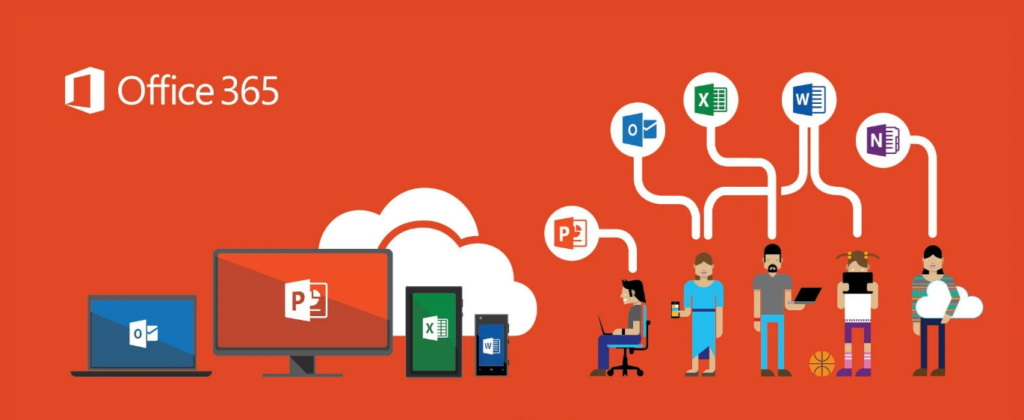A new way of working.
In recent years, we’ve been pushed further into more innovative approaches to working and have had no choice but to embrace these changes for better or worse; with a CNBC study seeing that even back in 2018 70% of employees worked remotely at least one day per week 1 .
With that percentage rising dramatically as the pandemic has shifted our approach towards working from home (often referred to as wfh or wfa: work from anywhere), more businesses have had to adopt communicating and collaborating more online as well as creating more of a flexible structure for their staff.
Flexibility can give various positive effects from how, when, and where an individual works to fit them best, enabling a business to bring in specialists where needed: or scaling up and down to meet their demand.
Utilising technology in this way helps to bind the ‘mobile workforce’, meaning employees who are scattered across physical locations are connected through the internet like never before. Providing new equipment and a good working environment is necessary in 2021, millennials and gen z are predicted to change their careers throughout their lives plenty more than the older generations, therefore giving them the best working environments and the right tools is essential.
Steve, who leads FreshStance has been working from home, overseas and in various client offices on and off since 2006, that’s 15 years! And he’s been helping others do the same for just as long. In this blog post, we aim to share that experience with you, helping you discover the many benefits that the modern workplace has to offer, and why you shouldn’t just accept it as an inevitable way of working – but use it to your advantage in order to meet both your physical and technological needs.

Why should you take advantage of the modern workplace?
Turning your business in to a modern workplace enables you to realise improved productivity levels, communication, and collaboration techniques, as well as an overall benefit to employee satisfaction and retention.
Many studies show that employees experience more freedom, and (despite the often-traditionally negative reputation that comes with working from home) are more productive. This is due to the feeling of freedom one gains from working remotely, as well as a sense of flexibility and control for employees over their time; leaving them satisfied in their roles.
Harvard’s: ‘The Workplace Evolution’ study, reports that 78% of business senior executives would like to use more ‘modern workplace’ strategies. However, only around 31% of these executives think their company is innovative enough to adopt the modern workplace structure 2 – being perhaps more hesitant about the transition, as opposed to the methods themselves.
Communication and collaboration are also easier to achieve than before, with the use of applications such as Microsoft Teams skyrocketing from 75 to 115 million users in less than 6 months from April to October of 2020.
Welcome to Microsoft’s modern playground…
Collaboration, communication, and security. No business can survive without them, and Microsoft enables all three to the fullest.
People tend to communicate through various platforms: including Slack, Google Docs, Gmail, or Trello. Communicating through multiple channels such as these means it’s confusing for all, with things becoming lost in translation.
Microsoft Teams, SharePoint, and other Office 365 applications are being increasingly used by businesses to develop ideas amongst themselves and communicate effectively. Features such as storing data online and syncing it locally to work offline, as well as the ability to video and voice call, share screens, and message (all in Teams alone) makes collaboration feel effortless. Windows 10 Virtual Desktop allows users to access their work desktop from any device, allowing them access to their files at home or on the go while having separation between work and personal life but remaining secure.
Office 365 apps are known to complement each other well, such as Teams and SharePoint being seamlessly integrated. For example, if you upload a file onto SharePoint and want to share it to a Teams ‘channel’ you can easily do so. Teams meetings can easily be recorded and kept in Stream so they can be saved for future reference or shared with others in the team – ideal for staff training sessions. Shifts makes staff scheduling and annual leave management easy. Third party apps like Zoom, Trello and Salesforce can be added to Teams too.
Microsoft Teams enables businesses in so many ways, easy individual and group calling either between Teams clients or to normal phones, and video chatting and sharing documents and screensharing when presenting something to a group. Video conferencing can be used for presenting to small groups such as your colleagues, or on a larger scale when presenting a webinar to clients, known as ‘Teams events’.
FreshStance uses Teams for everything- from discussing marketing materials as well as refining technical documents between engineers, to sharing training opportunities and managing shifts, we don’t go a day without using the application. To prevent staff from feeling isolated when working from home, we use Teams to also catch up with each other weekly, resulting in a boosted morale, and numerous gaming and movie tips.
No security = a crumbling workplace…
With Microsoft Security being a leader in five of the Gartner Magic Quadrants 3 , it is a prestigious system, using intelligent security that is essential for any modern workplace. Office 365 makes your systems incredibly secure, without being inaccessible to employees.
As your business grows, so does the number of employees on the business’s system, therefore the locations perimeter and even device-based security become less effective and, in some cases, impossible to manage.
With Office 365 you have the ability to control who within and outside your company can see individual documents and can even revoke access if documents, for example, need to be made confidential. With email security tools such as Zivver we can do the same with email.
A password management tool such as Keeper can also be used here to effectively store all of your passwords by using multi factor authentication, as well as showing you how strong or weak your passwords are; meaning your information is much less likely to be compromised. You can give the right people the ability to use a password, even without them actually knowing what it is if required.

Is your head in the clouds?
Microsoft 365 comes with countless tools and productive apps that compliment advanced cloud technology.
One of the main upsides to the cloud is the cost. Services (like our support) are paid for on a monthly basis and can be scaled to match your needs – need to add temporary staff to deal with the Christmas rush? Easy. Need to add licenses in November, remove them in January? Done. Don’t pay for capacity when you don’t need it but have it when you do. And if you want resilience it comes at a much lower cost than it would to implement yourself.
Have you considered advanced tools, perhaps for data analytics, business intelligence (BI), machine learning etc? If you’ve got a lot of data to analyse instead of exporting and using Excel, cloud services allow you to access powerful tools for a fraction of the cost, quickly and in the capacity, you need it.
Reliability is a given with the cloud, your data and application are protected. Cloud servers are kept in a temperature-controlled environment with redundant power sources and internet connections. On top of that redundancy is used with emails, files and even servers replicated to multiple disks, servers and even data centres in some cases. If a server fails, you’ll never know. The backend servers can even be upgraded with no downtime and your data safe throughout. It’s little different to the server you’ve got in a cupboard or tucked away under a desk!
Does ‘work hard, play hard’ still exist?
Arguably one of the most beneficial arguments of having a modern workplace is a better work-life balance, with an increase in flexibility of where, when, and how an individual can work, leading to an increase in both productivity and morale.
A report from Deloitte found that a good work-life balance is the most important thing for millennials when accepting a job 4 . This means that businesses must offer good work-life balance opportunities and flexibility, which is why having a ‘modern workplace’ structure is so important when hiring the younger generation. Simply, they’re more likely to join and stay in your company if you offer this. With recruitment costs as high as they are this can make a huge difference to the profitability and success of a business.
Instead of focusing on hours in the office, companies are turning their focus towards deliverables and outcomes. This is based off of the philosophy that if people have less hours in the day to work, they are actually more likely to have a higher productivity rate, as seen in countries such as Germany: where they tend to have less hours in a workday but are some of the most productive people in the world. John Kotter stated that you should look to create many short-term targets instead of one long-term goal, which are proven to be more achievable as well as less expensive and lesser of a chance to fail 5 .
If you have just started working from home, consider changing your ‘work, life, balance’ way of thinking into a ‘work, life, harmony’ way of thinking. Strive to be content no matter what you’re doing, and instead of merely having a balanced life and attempting to balance the good and the bad, you can enjoy what you do for work, creating a harmonious structure rather than simply a balanced one. Time can now be more easily taken for unexpected doctors’ appointments, childcare needs, and family time; meaning employees are happier and healthier.

How will the modern workplace continue to change?
The growing movement to a modern workplace is becoming less of an option and more a requirement. This is a movement that was already happening, and the last 12 months have accelerated this change.
According to a study from Intuit, outsourced freelancers will make up 40% of the workforce by the year 2021, as they are more efficient and save money overall for the company 6 . They let you bring in experienced specialists either part time or full time, being flexible workers, and allows a smoother process of growing your business the way you want to.
Being open to and welcoming modern ways of working means that you will inevitably pull ahead of competitors – you will adapt more easily as technology changes in the near future and adapt more to how the younger generations are breaking away from the traditional ways of working. While others waste time and money resisting change you gain competitive advantage.
We’re debating whether fast access to the internet is more important than physical location and suggest the move to flexible working could reverse the movement from a distributed workforce to factories and towns in the industrial revolution. Super-fast broadband could be a better national investment than super-fast transport. Increasingly we’re supporting customers who work all round the world rather than from one shared office, and hopefully soon you could be doing the same!
References:
- Browne, R (2018). 70% of people globally work remotely at least once a week, study says. CNBC.
- Koenigsbauer, K (2018). The Workplace Evolution. Harvard Business Review, pp. 4.
- Anderson, D (2019). Microsoft Security—a Leader in 5 Gartner Magic Quadrants. Microsoft.
- No author stated (2020). The Deloitte Global Millennial Survey 2020. Deloitte.
- Kotter, JP (2010). Kotter’s Leading Change Step 6 Planning for and Creating Short-Term Wins. Maciver Project Services.
- No author stated (2010). Intuit 2020 Report- Twenty Trends That Will Shape The Next Decade. Intuit, pp. 21.






